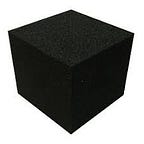How does blockchain work in 7 steps — A clear and simple explanation.
In 2017 the spirit of Bitcoin really got out of the bottle. After years of silence, Bitcoin’s valuation suddenly rapidly rose from about $1,000 to almost $20,000. A lot of people reinvented themselves as ‘professional crypto-trader’.
Yes, there was a lot of money to be made for a short period of time. But let’s face it; that party is over now.
Still, fact is that even though it was mostly the money that got people’s adrenaline pumping, it is the technology that got the ball rolling in the first place. And this technology, blockchain, might still hold huge potential. This could be the time for business developers, entrepreneurs and curious individuals to jump on the blockchain train and to be inspired. But such inspiration will require a better understanding of how the technology works first. Unfortunately, most of the current explanations out there are either covered in complex technical jargon or are way too shallow and lack in-depth details, neither of them which leads to a clear understanding. So where to start? Allow me to suggest you to start here. This ten to fifteen minute read will explain what is considered so revolutionary about this technology. It will be well worth your time. Enjoy.
What on earth is Blockchain?
First of all; a blockchain is a digital concept to store data. This data comes in blocks, so imagine blocks of digital data. These blocks are chained together, and this makes their data immutable. When a block of data is chained to the other blocks, its data can never be changed again. It will be publicly available to anyone who wants to see it ever again, in exactly the way it was once added to the blockchain. That is quite revolutionary, because it allows us to keep track records of pretty much anything we can think of (to name some: property rights, identities, money balances, medical records), without being at risk of someone tampering with those records. If I buy a house right now and add a photo of the property rights to a blockchain, I will always and forever be able to prove that I owned those rights at that point. Nobody can change that piece of information once it is on a blockchain (well, there is one way, but this is advanced material so I suggest you read it later, you can find it…
